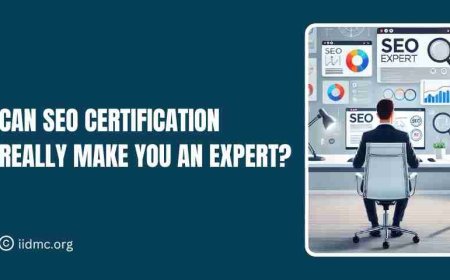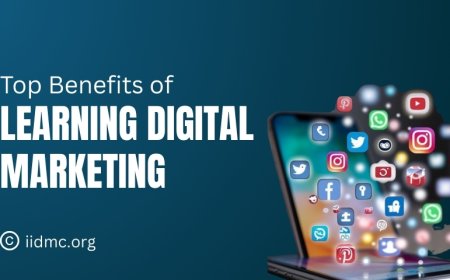What Is Technical SEO
Discover the significance of technical SEO and its impact on website performance. Learn key strategies and tools for optimizing your site's visibility in search engine results.

Technical SEO is maintaining a website's backend and infrastructure optimized so search engines can easily access, crawl, and index it. This optimization includes making the website faster, making sure it works on mobile devices, making it easier for crawlers and indexing to find and use the content using tools like robots.txt files and XML sitemaps, organizing URLs logically, using schema markup to improve search results, and keeping the site secure with HTTPS. Businesses may raise their search engine rankings and increase organic traffic to their websites by concentrating on these technical elements.
Imagine that your online business, which sells distinctive made jewellery, has just debuted a modern, content-rich website. Despite your best efforts, your website isn't performing well in search results, even if you're keen to draw visitors and convert them into customers. Even after improving your content and constructing a few backlinks, you're still not receiving the traffic you had hoped for. Technical search engine optimization is relevant in this situation. You see that some of the pages on your website are not properly indexed and that the loading speed is slow. It therefore becomes essential to put technical SEO methods into practice, like performance optimisation, making sure your website is mobile-friendly, and resolving indexing problems.
Technical SEO Meaning
The practice of improving a website's backend and infrastructure for search engines to increase exposure and ranking is known as technical SEO. To make sure search engines can efficiently scan, interpret, and index the site, it focus on elements like website performance, mobile friendliness, indexing, and site architecture.
Why Is Technical SEO Important?
-
Improved Search Engine Rankings: By optimizing technical aspects such as website speed, mobile responsiveness, and indexing, you increase the likelihood of your website ranking higher in search engine results pages (SERPs).
-
Improve User Experience: Technical SEO improvements, such as faster loading times and mobile-friendly design, contribute to a better user experience. This can lead to lower bounce rates, increased time on site, and ultimately higher conversion rates.
-
Better Crawlability and Indexability: When search engine bots can easily crawl and index your website's pages, your content is more likely to be included in search results, increasing your website's visibility.
-
Competitive Advantage: Websites that invest in technical SEO have an edge over competitors who neglect it. By staying ahead in technical optimization, you can attract more organic traffic and outrank competitors in search engine results.
-
Supports Other SEO Efforts: Technical SEO forms the foundation for other SEO strategies, such as on-page optimization and link building. Without a solid technical foundation, other SEO efforts may not yield the desired results.
Challenges in Technical SEO

-
Website Speed Optimization: Balancing website functionality with speed optimization can be challenging, especially for complex websites with large amounts of content and functionality.
-
Mobile responsiveness: ensuring a seamless experience across various devices and screen sizes requires careful planning and implementation, especially considering the different ways users interact with websites on mobile devices.
-
Indexing Issues: Overcoming issues such as duplicate content, canonicalization, and crawl errors can be challenging, requiring ongoing monitoring and troubleshooting.
-
Site Structure and Navigation: Creating a logical site structure and navigation system that is both user-friendly and search engine-friendly can be complex, particularly for large websites with numerous pages and content sections.
-
Technical Errors and Issues: Addressing technical errors such as broken links, server errors, and schema markup errors requires constant monitoring and maintenance to ensure optimal performance.
-
Website Security: Ensuring website security through measures such as HTTPS implementation and protection against malware and hacking presents ongoing challenges, especially given the evolving nature of cybersecurity threats.
-
Algorithm Updates: Staying abreast of search engine algorithm updates and adapting technical SEO strategies accordingly can be challenging, as these updates can impact rankings and visibility.
Technical SEO checklist
-
Website Speed Optimization:
-
Minimize server response time.
-
Enable browser caching.
-
Optimize images and use appropriate formats (JPEG, PNG, etc.).
-
Mobile Responsiveness:
-
Ensure the website is responsive and displays correctly on various devices.
-
Use responsive web design principles.
-
Test mobile usability using tools like Google's Mobile-Friendly Test.
-
Indexing and Crawling:
-
Create an XML sitemap and submit it to search engines.
-
Optimize robots.txt file to control crawling.
-
Use canonical tags to handle duplicate content issues.
-
Site Structure and Navigation:
-
Create a logical site structure with clear hierarchy.
-
Use descriptive and keyword-rich URLs.
-
Implement breadcrumb navigation.
-
Technical Errors and Issues:
-
Regularly monitor for broken links and fix them.
-
Check for server errors (e.g., 404, 500) and address them promptly.
-
Implement HTTPS for a secure connection.
-
Website Security:
-
Implement HTTPS to secure data transmission.
-
Regularly update website software, plugins, and themes to prevent vulnerabilities.
-
Use strong passwords and implement security measures to protect against malware and hacking.
-
Monitoring and Analysis:
-
Monitor website performance using tools like Google Analytics and Google Search Console.
-
Track keyword rankings and organic traffic.
-
Analyze user behavior and engagement metrics.
-
User Experience Optimization:
-
Optimize website design for usability and accessibility.
-
Improve page load times and overall website performance.
-
Ensure content is easily readable and formatted correctly.
What are the steps for technical SEO
-
Website Audit: Conduct a comprehensive audit of your website to identify technical issues and areas for improvement. This includes analyzing website speed, mobile-friendliness, indexing status, URL structure, and other technical aspects.
-
Keyword Research: Identify relevant keywords related to your website's content and target audience. Use keyword research tools to discover search volume, competition, and potential opportunities for optimization.
-
On-Page Optimization: Optimize on-page elements such as title tags, meta descriptions, headings, and image alt text with relevant keywords. Ensure content is high-quality, valuable, and optimized for search intent.
-
Website Speed Optimization: Improve website speed by optimizing images, leveraging browser caching, minimizing CSS and JavaScript files, and using a Content Delivery Network (CDN). Faster loading times improve user experience and search engine rankings.
-
Mobile Responsiveness: Ensure your website is mobile-friendly and displays properly on various devices and screen sizes. Implement responsive web design principles to provide a seamless user experience across desktop, mobile, and tablet devices.
-
Indexing and Crawling: Ensure search engine bots can crawl and index your website effectively. Create XML sitemaps, optimize robots.txt files, and use canonical tags to manage duplicate content. Monitor crawl errors and fix them promptly using tools like Google Search Console.
-
Site Structure and Navigation: Create a logical site structure with a clear hierarchy and internal linking. Optimize URL structure for readability and keyword relevance. Implement breadcrumb navigation for easier navigation and improved user experience.
-
Technical Errors and Issues: Regularly monitor for technical errors such as broken links, server errors, and HTTPS issues. Fix them promptly to ensure optimal website performance and search engine visibility.
To improve a website's backend and infrastructure and improve search engine visibility and performance, technical SEO is crucial. Businesses can increase their search engine results, draw in more organic traffic, and improve user experience by tackling technical issues like website performance, mobile friendliness, indexing, and site structure. These actions ultimately increase conversions and help businesses succeed online.




























